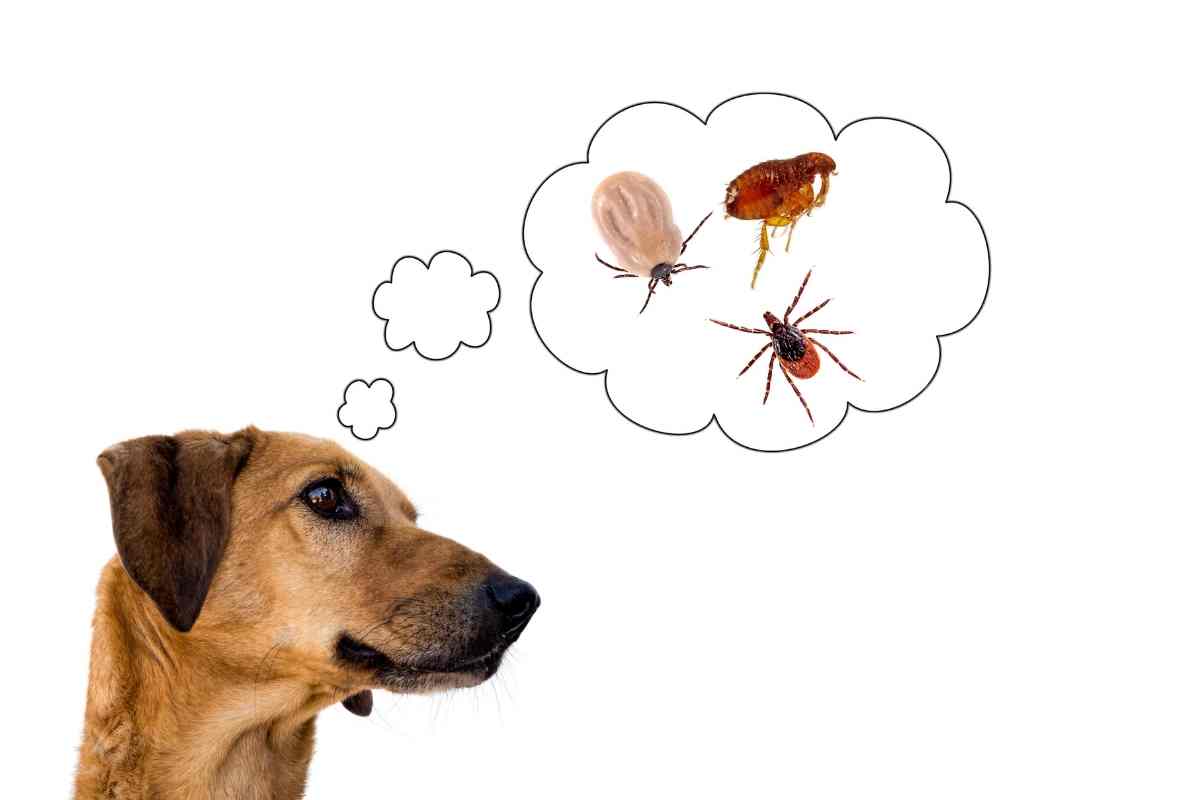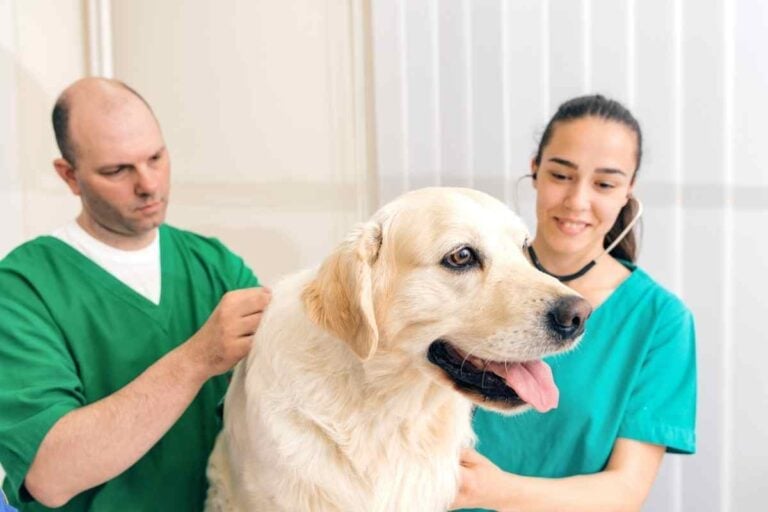Common Symptoms of Lyme Disease in Golden Retrievers (Vet Weighs In)
Has your Golden Retriever been diagnosed with Lyme Disease? This is a disease that is transmitted by tick bites. If you have recently been hiking the wood or your dog has been running thru tall grass, your dog could have easily picked up a tick.
It only takes a short time for these ticks to transfer this disease to your Golden Retriever. There are some common signs and symptoms that would indicate that your Golden Retriever may have Lyme Disease.
Common Symptoms of Lyme Disease
- Shifting Leg lameness
- Not eating
- Swollen Lymph nodes
- Kidney failure
If you notice that there is something wrong with your dog and have noticed ticks on your dog recently, it would be best for them to see your vet. Lyme disease can progress and cause serious and life-threatening organ failure if not treated right away.
What is Lyme Disease?
Lyme disease is a spirochete bacterium that is known as Borrelia burgdorferi. Most cases of Lyme disease are seen in the up upper Midwest, Northeast, and the Pacific coast.
When a tick bites your dog, they transfer these bacteria to your dog. A tick will need to be attached to your dog for 24 to 48 hours. Your dog can easily pick up ticks when they are outside running in tall grass or when you are going on a hike in the woods.
Signs of Lyme Disease In Dogs
The main sign of Lyme disease in dogs is shifting leg lameness. Your dog may be lame on one leg and the next day not using a different leg. They will also have a decreased appetite, swollen lymph nodes, and seem stiff when they are walking. If Lyme disease is not treated, your dog can have kidney disease and even death.
The most common signs of Lyme disease seen in Golden Retrievers:
- Shifting Leg Lameness: Lyme disease effects your dog’s joints causing them to have pain and inflammation. Since this can affect all the joints, your dog will most likely limp on the leg that hurt the most that day. This can cause what is called shifting leg lameness.
- Not Eating: In severe Lyme disease infestation, your dog may be running a fever and not wanting to eat. While not eating can be a sign for almost any health issues, if your dog is not eating, they should see your vet to figure out what is causing them to not want to eat.
- Swollen Lymph nodes: Your dog’s lymph nodes will commonly be swollen if they have Lyme disease. Your dog has lymph nodes that can easily be seen and felt in their neck, arm pits, groin and behind their knee. Usually these will quickly return to normal size when your dog finishes taking their antibiotics.
- Kidney failure: Lyme disease can cause your dog’s kidneys to fail. Kidney disease is often seen 3 to 4 weeks after your dog is diagnosed with Lyme disease. Dogs with kidney failure are often not eating, vomiting, and losing weight.
Shift leg lameness is almost a hallmark sign for this disease, the rest of the signs seen in Golden Retrievers with Lyme disease can also be a sign for many other health issues.
If you notice any of these signs in you Golden Retriever, it would be best for your dog to see your vet. They can quickly run a blood test to see if your Golden Retrieve has Lyme disease or if there is something else causing your dog to not feel well.
How to Diagnose Lyme disease in dogs?
Lyme disease can easily be diagnosed by a blood test. Your vet will want to perform a physical exam and run bloodwork. This bloodwork will also check for liver and kidney abnormalities and help your vet be able to develop a treatment plan for your dog.
Your vet may also take a joint fluid sample to make sure that there is not an infection in their joint capsule. Most dogs who live in popular Lyme disease areas will test positive for Lyme disease. Not all positive animals are treated for this disease.
Treatment of Lyme Disease
If your dog is positive for Lyme disease and is showing signs of this disease, they will be treated with Doxycycline. This is an antibiotic that will help kill these bacteria. Only about 10% of dogs who are positive for Lyme disease will need to be treated. In severe cases, your dog may have to stay in the hospital on IV fluids and injectable medications for them to fully recover.
Many dogs live in areas where there is a high numbers of Lyme disease, but they will not show any signs of the disease. Your veterinarian may recommend that you test your dog each year for tick born disease to know if there are any underlying diseases that you need to be watching for signs of the disease.
How to Prevention of Lyme Disease?
One of the best ways to treat Lyme disease is to prevent your dog from getting ticks.
Monthly Tick Medications
There are many great monthly flea and tick medications that your dog can take to help kill any ticks that they come in contact with. This helps decrease the time that the ticks are attached to your dog, thus preventing the ability to transmit Lyme disease to your dog. Commonly prescribed tick medications are:
- Nexguard Chews
- Bravecto Chews
- Advantix Topical
- Frontline Plus Topical
- Revolution topical

Some of these medications cannot be given to dog who have a history of seizures. Also, some of these pills can cause your dog to have an upset stomach for a day. This will get better with time. The topical medications can cause hair loss and itching where the medications was applied. Due to these side effects your vet may recommend a different medication.
There is also a flea and tick collar that your veterinarian may recommend for your dog too. The serresto collar will last for 6 to 8 months on your dog. This is an easy way to help prevent your dog from getting ticks without you having to remember to give them a pill each month.
Limit access to wooded areas
Most ticks live in wooded areas or areas with tall grass. Limiting your dog’s activity in this area will help decrease their chances of getting ticks.
Keep your Yard short
Keeping the grass in your yard trimmed very short will decrease the chance that your dog gets ticks. Most ticks like tall grass and wooded areas. Also, make sure the areas that you take your dog for a walk also has very short grass. Grassy fields are commonplace for dogs to love to paly but is also a very common place to find ticks.
Spray your yard for ticks
There are many sprays that you can use to spray in your yard to kill and prevent fleas and ticks. You can either hire an exterminator to come do this for you or you can do this yourself.
If you do plan on tackling this project yourself, make sure that you follow the instructions and keep your pets off the grass for the appropriate amount of time so that your dog does not ingest the pesticides causing them to be very ill.
Check your dog for ticks each day
Each time that your dog come in from playing outside, it is good to thoroughly check them for ticks from nose to tail. Make sure that you check in between their toes and in their ears. These are common places that ticks like to hide.
The shorter time that these ticks stay attached to your dog the less likely they will develop Lyme disease.
Vaccinate your dog for Lyme Disease
If you live in an area that is very common for Lyme disease, there is a vaccine that your veterinarian can give your dog to help prevent them from catching this disease. Your dog will get their 1st vaccine when they are a puppy followed by a booster 3 to 4 weeks later. After their initial vaccine series, they will need to get this vaccine each year.
Final Thoughts
If your dog has been diagnosed with Lyme Disease and is showing signs of this disease, your vet can easily treat your dog. Usually, with 30 days of medication, your dog will quickly and successfully recover.
Remember that prevention is way easier than treatment. By giving your dog flea and tick prevention, you can easily help prevent your dog from catching Lyme disease or many of the other diseases that are carried by ticks and fleas.






